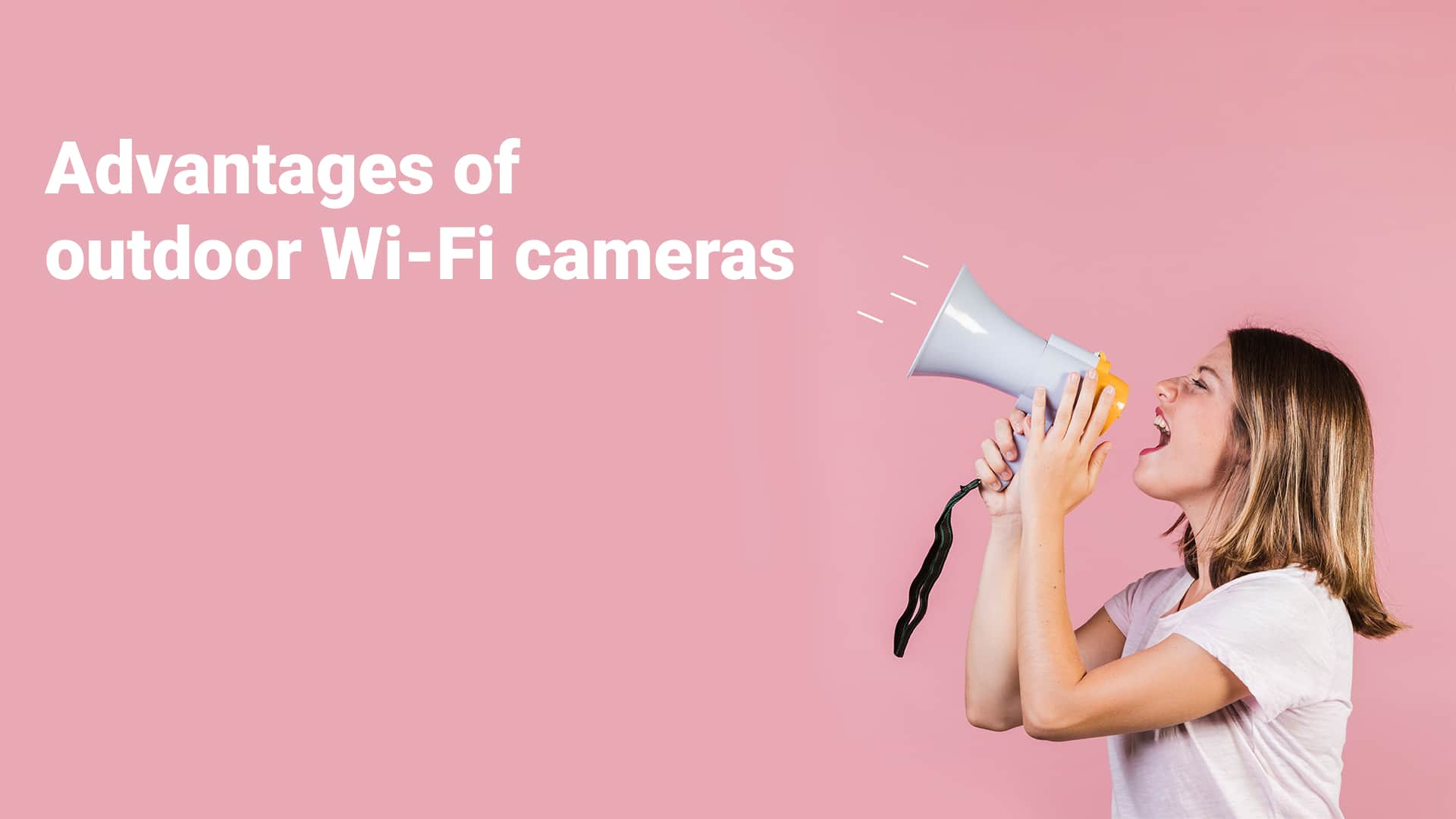The technologies don’t stop developing and you get more opportunities for the same money as a year ago. But what really matters in choosing new equipment? Recently, the prevalence of Wi-Fi security cameras has been increasing. Due to the rich functionality and ease of use, digital devices are gradually replacing analog devices. As for wireless ones, they are increasing these days.
A wireless camera is a digital video surveillance device that transmits information using Wi-Fi. According to the location, there are Indoor and Outdoor WIFI Security Cameras. The design of the outdoors allows them to operate despite the high temperature. Such devices are protected from dust and moisture. Thanks to this feature, Outdoor WIFI Security Cameras can work in heavy weather conditions. It is also possible to install indoor equipment outdoors if it has special protective housing.
Depending on the model, the equipment may have various additional interfaces:
• Input for external sensors and burglar alarms.
• Output for audio devices.
• Ethernet port for wired network connection (works as an alternative to wireless connection).
• Slot for memory card MicroSD.
IP cameras come in different shapes and sizes. The most common way to classify them is by shape: bullet, dome, mini dome/turret, or PTZ. The camera choice usually depends on several factors, such as installation location, quality image, and convenience.
If you want to hide your camera, choose IP ones without IR illumination and an external antenna. Backlight LEDs can attract attention, therefore they are not always suitable for hidden devices.
Main features of Wi-Fi cameras
IP cameras are connected to a local network utilizing a router. As a rule, it uses the WPS (Wi-Fi Protected Setup). The network connection’s initial configuration is also possible via USB or an Internet cable if there are appropriate interfaces.
Devices can support PTZ technology (pan, tilt, zoom), which allows rotating the camera up and down, as well as zoom in on a certain part of the image. Pan, tilt and zoom operations are usually in the same window where video and audio are transferred. You can use a web interface or a separate application for access.
Outdoor WIFI Security Cameras are often equipped with infrared illumination, which consists of several LEDs around the lens. It allows seeing objects from 5 to 50 meters away.
Some devices are equipped with a feedback system. They provide an opportunity to transmit audio in the opposite direction.

Advantages of outdoor Wi-Fi cameras
The convenience of connection, the ability to remotely access the video stream, and the availability of feedback are the main advantages of wireless devices for video surveillance. Connecting Wi-Fi cameras does not require laying cable for information transfer. Data is exchanged over the Internet, so the broadcast is available anywhere in the world. You need to enter the IP address, username, and password for connection.
Another advantage is the broad functionality of the wireless camera software. When motion is detected, the device can send the user an SMS or e-mail. Some models allow you to configure face recognition and notifications about changes of connected sensors. Video recording from IP cameras can be saved to cloud storage.
Disadvantages of smart Wi-Fi outdoor camera
The disadvantages also include the fact that the devices are not entirely wireless, because the information is transferred over a radio channel, so you need a cable connection for the power supply. Unfortunately battery models are not so widespread.
It’s not easy to choose a smart Outdoor WIFI Security Cameras, but fully explore the important features, you can easily define the desired variant. Don’t take this choice lightly, a small camera can be your savior, so you need to seriously choose this device. Take care about your home safety avoiding vandalism and other risks, choosing the smart helper.

